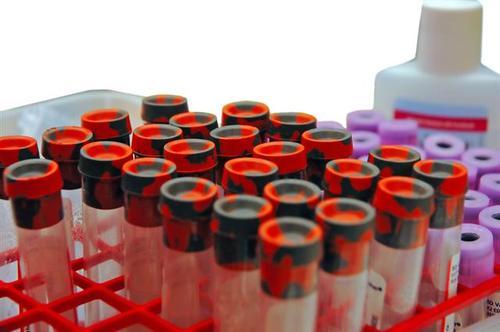I’ll admit it: for the past year, I had been negligent about completing my bloodwork for InsideTracker to analyze. As a full-time graduate student in Boston who was working two jobs, it was difficult for me to find the time to get myself over to the blood center in between class and work. To make matters worse, the nearest blood center in the Boston area was inaccessible via public transportation…and I don’t have a car. So, what’s a time-strapped, car-less girl to do?
I left Beantown to take a job in New York City for the summer, and I still hadn’t managed to get my blood drawn. So when the folks at InsideTracker offered to let me try the at-home testing option, I jumped at the opportunity. I signed up for the at-home option on the InsideTracker website, and, a few days later, a phlebotomist called to make an appointment with me. I was initially a little hesitant about having a stranger come to my small studio apartment and potentially spill vials of blood all over my furniture, but I decided that the convenience of the at-home option was worth the risk.
The phlebotomist agreed to come to my apartment before work at 7am. He arrived right on time, which scored him some punctuality points. I was happily surprised to see that he was only carrying a backpack—for some reason, I was under the mistaken impression that he would come bearing an entire laboratory’s-worth of materials. I cleared some space on my desk, and signed a consent form. Less than ten minutes later, I had filled five vials with my blood, and he was gone. Here’s what surprised me the most about my at-home testing experience:
The entire process—from filling out the paperwork to getting my blood drawn—took just 15 minutes! I ended up being really early for work that day. Even though the phlebotomist drew my blood at home and not in a designated testing/medical center, the procedure was completely sanitary. The phlebotomist wore gloves, had a box full of individually-wrapped, sterile needles, and carefully cleaned my arm with alcohol. My phlebotomist was exceptionally skilled. I typically have a difficult time with blood tests because I have unusually small veins, but he was able to fill all the necessary vials of blood in one shot—which occurs far less often than I would like! Even though I was alone in my apartment with a stranger, I didn’t feel uneasy the experience. The phlebotomist was very professional, and left quickly when he was finished.The phlebotomist sent the vials of my blood off to the lab for testing, and within a few days, I received an email from InsideTracker notifying me that my results were ready. Since I broke my foot two months ago and have been replacing healthy food and exercise with chocolate and marathon television watching, I had been bracing myself for bad news. Instead, I was a little surprised by what I discovered.
It turns out that I have elevated levels of vitamin B12. This vitamin aids with brain and nervous system function and with the formation of blood, but getting too much of vitamin B12 can cause headaches, impaired immune response, and rashes. Before getting my blood tested, I wasn’t particularly concerned about this biomarker, but my results caused me to stop and think. When I looked at the food recommendations section for B12, I noticed that InsideTracker advised me to eat fewer nutrition bars. That was it! Instead of dragging my broken foot to the supermarket and buying unprocessed food, I had been dutifully (and lazily) eating a nutrition bar every day for breakfast. So, it turns out that not only are nutrition bars a much more expensive breakfast option than oatmeal or fruit, some brands also contain large amounts of vitamin B12! After getting these results, I’m definitely going to make an effort to head to the grocery store instead of the office vending machine.
More surprisingly, my white blood cell count is high, which indicates that I have a significant amount of inflammation in my body. Having a healthy white blood cell count is important for maintaining bone strength, sufficient zinc levels, and longevity. Prior to my InsideTracker analysis, I had never even thought about my white blood cell count, but I’m definitely glad that I have the knowledge to do something about it. The recommendations on my bloodwork page provide very helpful food and exercise suggestions to lower my white blood cell count. I’m looking forward to eating more antioxidant-rich foods like berries—which are in season right now!
My overall at-home testing experience was overwhelmingly positive. Not only was it incredibly quick and convenient, but I also learned some surprising things about what’s going on inside my body that I would not have known without the test. I encourage anyone who is strapped for time to check it out!
